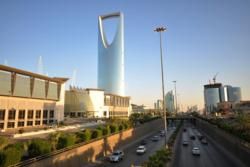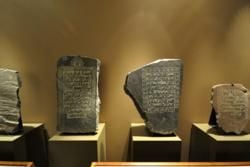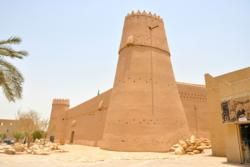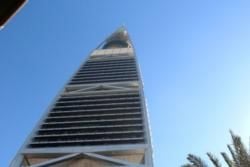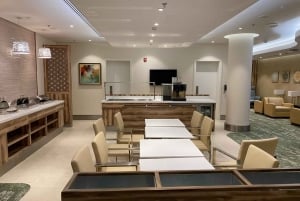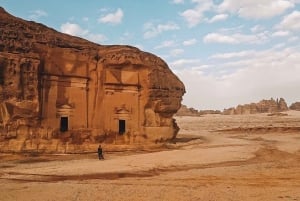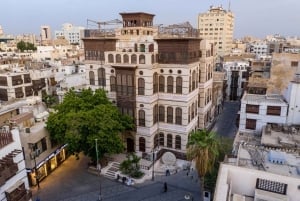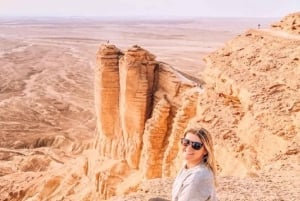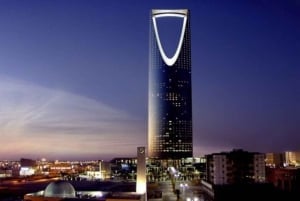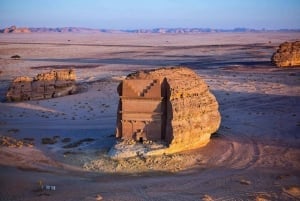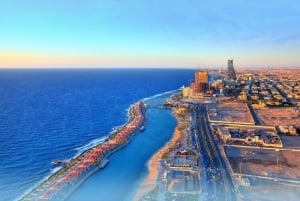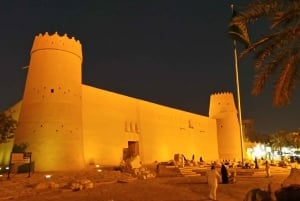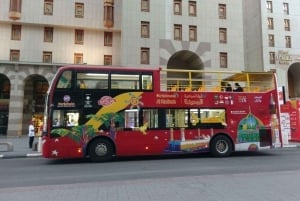Riyadh
Thanks to the oil boom of the 1950s, the capital city of Saudi Arabia, Riyadh, quickly outgrew its beginnings as a desolate, walled settlement, transforming itself into a thriving city with a population of nearly 5.5 million. Today, Riyadh is a prosperous financial center attracting regional and international businesses and banks.
Despite its tall shining towers, international chains, hotels, high-end fashion malls, restaurants, coffee shops, cigar lounges, gardens and parks, Riyadh remains a city replete with time-honored traditions.
Its contemporary steel and glass constructions hide a collection of well-preserved traditional stone and mud-brick architecture accommodating the ancient souks (markets), a hub for tourists and locals seeking traditional merchandise.
Riyadh is replete with traditional souqs or markets: most are in the old district with narrow passages displaying carpets, brassware, traditional daggers, prayer beads, jewelry, clothing, sandalwood, assorted Arabian scents and even more assorted types of dates.
The districts of Deerah and Bat’ha are located within the older corners of Riyadh. In Deerah, the Al-Masmak Fort is a 19th century fortified clay and mud-brick castle, and the location of the historic battle to conquer Riyadh by the founder of modern-day Saudi Arabia, Abdul Aziz Ibn Saud in 1902.
Once his private residence, the historic Al Murabba Palace is a square-shaped two-storey residence at the center of which is a large courtyard. Now converted into a museum within the Murabba Palace Historical Centre Park, the museum showcases photographs of the first Saudi monarch, as well as royal offices and meeting rooms used during his time.
In Riyadh's Murabba Palace Historical Centre Park is the King Abdul Aziz Memorial Hall, where a historically tantalizing display is on offer: the founder’s memorabilia from his political and cultural life, a 1946 Rolls Royce, jewelry, swords and other memorabilia that speak of a long-gone era.
Also within the same complex is the hugely popular National Museum. The museum stores a plethora of antiques, documents and artifacts illustrating the city’s rich past.
There’s much more for the history-hungry visitor in Riyadh: a Postal Museum, an Anatomy Museum, a Military Museum, the King Fahd Security College Museum, and no, it’s not over yet.
The Riyadh Museum of History and Archaeology, in the old quarter of Bat’ha, holds an impressive exhibit of religious and cultural history that includes paintings, instruments, coins and other ancient paraphernalia. And to top it all off, there’s a Stone Age display of clothing, weapons and tools.
History, however, meets nature in Dir'iyah. On the outskirts of Riyadh lies an oasis town nestled in the valley of Wadi Hanifa, the city's green lung. The 15th century oasis town, once the capital of the Arabian Peninsula, was the seat of power for Al Saud and today, with the town's palaces and urban center restored to some of its past glory, Dir'iyah has become the wonder of Nejdi architecture.
If modernity is the ultimate measure, however, The Kingdom Center is one of Riyadh’s most significant landmarks. With an odd-looking outline (sometimes dubbed the ‘bottle-opener’), an almost V-shaped gaping hole at its top end, the Kingdom Center is a 99-floor skyscraper, and the highest building in Saudi Arabia, at 302 meters.
The Kingdom Center houses a 3-storey mall, a 4,400m2 wedding hall, a five star hotel, conference centers, entertainment venues, and sports clubs amid many other establishments. The structure won the 2002 Emporis Skyscraper Award for its design.
Al Faisaliyeh Center may be the second highest building in Riyadh but it remains the city’s first skyscraper. A golden globe at its top centerpoint holds a restaurant with spectacular views of the city.
But there’s one district any visitor to Riyadh should know about, if not visit at least once: The Diplomatic Quarter (DQ) in the northeast of the city, once a drab arid expanse, today a lush landscaped area housing embassies, international agencies, various residential compounds, gardens, parks, banks, hospitals, supermarkets, sports facilities, schools; in all, a little town in a world of its own. Famed for being the city’s ‘greenest’ architectural work, DQ is one of Riyadh’s most significant urban projects.
Football is the most popular sport in the Kingdom. Riyadh hosted the FIFA Confederations Cup in 1992, 1995 and 1997 at the King Fahd International Stadium which has a seating capacity of 70,000. Cricket, mostly played by the expat Indian community, is the second most popular sport in Riyadh. For the milder variation of sports, there are various golf clubs in Riyadh, and some hotels have onsite golf courses.
Desert activities in Riyadh include riding quad bikes and dune buggies, and jeep and camel safaris; for the nature adventurer, there’s desert hiking and ‘off the beaten track’ SUV excursions.
Al Jenadriyah Heritage and Cultural Festival is a major tourist attraction in the region. Held every year in February, it starts with the world’s largest camel race. The race is followed by poetry recitals, performances and games. An arts and crafts market and a book fair are on display.
Summer in Riyadh starts around April and lasts until October. The season is extremely hot and dry with an average temperature of 43 ̊C (109F). Summer dust storms abound and are extremely unpleasant. The winter season starts around November and continues until March, with high temperatures ranging between 20 ̊C to 24 ̊C (68F and 75F), and low temperatures between 9 ̊C to 12 ̊C (48F and 54F). Riyadh receives an average of 102mm (4 inches) of rain a year.
Riyadh’s main airport, King Khaled International Airport, is 35 kilometers north of the city. Around 13 million passengers pass through both its domestic and international terminals each year. Eight car rental companies serve the airport and an airport hotel, Sahara, is nearby. Riyadh’s time zone is GMT/UTC +3.
Photo credits: Blue Abaya Photography



